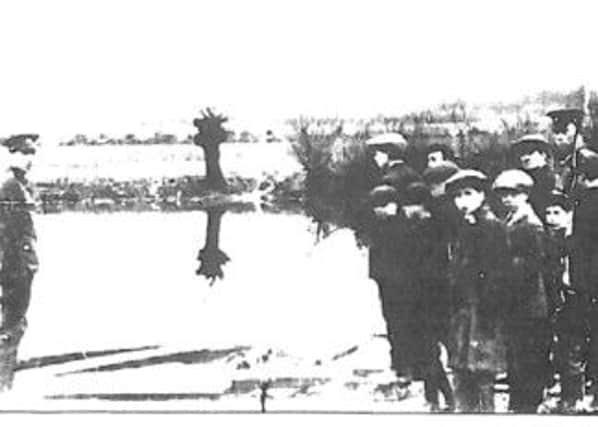Raft tragedy of young recruits is remembered


This month’s commemorative Project Bugle newsletter tells of the catastrophe in Morton, near Gainsborough, involving soldiers from D Company of the 4th Battalion, King’s Own Yorkshire Light Infantry.
Private Edmund Battye, 22, a former miner who lived in Fieldhead Lane, Birstall, was among the deceased.
Advertisement
Hide AdAdvertisement
Hide AdOn Feburary 19, 1915, 40 men piled on to the raft made out of rope, straw and wood planks, which was pushed off to float in a 32-foot “gyme” – deep pool – which local legend suggested was bottomless.
A Batley News report of the inquest read: “Some of those on the raft waved their hands to those on the bank and jocularly wished them ‘goodbye!’”
But suddenly, one side tipped over and the men were plunged into the water.
The report continued: “A terrible struggle in the water ensued, and the wonder is that more were not drowned.
Advertisement
Hide AdAdvertisement
Hide Ad“It is stated that at least two of the men who lost their lives were good swimmers, and they must have been dragged or pushed down by their struggling comrades.
“As a matter of fact, the dragging operations resulted in three bodies being brought ashore clinging together; and one of the men had his coat and waistcoat torn from his back.”
The inquest heard that the men, who were to be deployed in weeks, were inexperienced and had no idea of the water’s depth.
Lance Corporal Punyer, who had control of the punting pole, told the coroner Colonel Haselgrave that it was impossible to touch the bottom of the pit.
Advertisement
Hide AdAdvertisement
Hide AdLocals were mystified as to why the deep pool was chosen for the exercise when shallow waters could be found nearby.
When questioned by the coroner, the officer in charge of the exercise Captain Harold Hirst noted that if the men had kept steady, the raft would have been safe and said he had told them to do so.
A verdict of “accidentally drowned” was recorded.
Private Battye’s funeral pulled a large home crowd, as a procession took off from his sister’s house in New Street to Batley Cemetery, where he is buried.
Project Bugle, a Heritage Lottery-funded scheme led by volunteers, is working to record the history of soldiers from Batley and Birstall who were killed during WWI.
Advertisement
Hide AdAdvertisement
Hide AdIt has helped to organise wreath-laying ceremony for all seven victims will take place at Batley Cemetery on Thursday February 19, to mark the 100 year anniversary of the tragedy. Gather there at 10.40am for an 11am start.
The group also produce monthly newsletters and exhibitions at Batley and Birstall’s libraries.